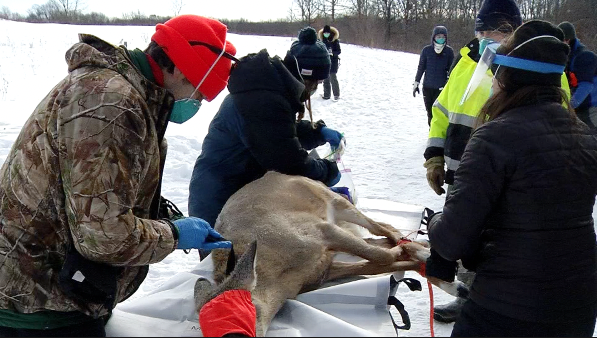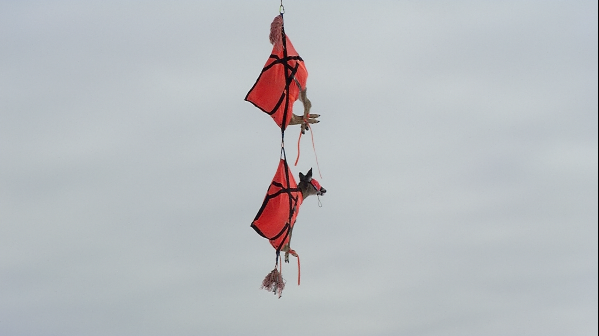Helicopters Used for Deer Research Project at Elm Creek Park Reserve
More than 4,900 acres of wilderness make up Elm Creek Park Reserve.
In that area are scores of white-tailed deer.
“We know where they are in January when we fly an aerial deer survey,” said John Moriarty, a senior wildlife manager with the Three Rivers Park District. “We can see the deer. We can tell where they are, but that’s where they are in the winter.”
What they’d like to know more about is how the deer move and where they go in the summer.
“We think that our deer move as far as the Mississippi River,” Moriarty said.
To answer those questions, they’ve partnered with the University of Minnesota, the U.S. Department of Agriculture, and a team of expert helicopter pilots.
“That’s all they do is catch animals,” said Moriarty, referring to the pilots.
Over the course of two days, crews in the helicopter hope to catch 40 deer with a net. After they’re caught, they’ll use a sling to fly the deer to a central location where a team will strap a radio collar onto their necks, which will then track their movements.

Researchers at the Eastman Nature Center in Dayton test and collar a captured deer.
Testing for SARS-CoV-2
At the same time, researchers from the U of M will take blood and other DNA samples to test for SARS-CoV-2, the virus that causes COVID-19.
“Right now we know that white tailed deer can get infected with the virus, SARS-CoV-2,” said Meggan Craft, an associate professor at the University of Minnesota’s department of ecology, evolution and behavior. “And they’re also good at transmitting it amongst themselves. We don’t understand how this is happening and how the deer seem to maintain SARS-CoV2 in their population.”
Similar studies are being conducted across the United States to help experts get a sense of the effect the virus has on deer populations.
“This study will help us determine if there’s any issues with sickness or death because we will be able to individually follow these collared deer through the next two years,” Craft said.
Capturing the deer is one thing. Getting them to cooperate after they’re captured is another matter altogether.
But the entire process only takes about 15 minutes before the team releases the deer back into the wild.
It’s a labor intensive activity that will provide researchers with years of important data.
“This is exciting,” Craft said.

The deer from Elm Creek Park are captured and brought to a spot near the Eastman Nature Center via helicopter.
Related: Brooklyn Park Deer Herd on the Grow


